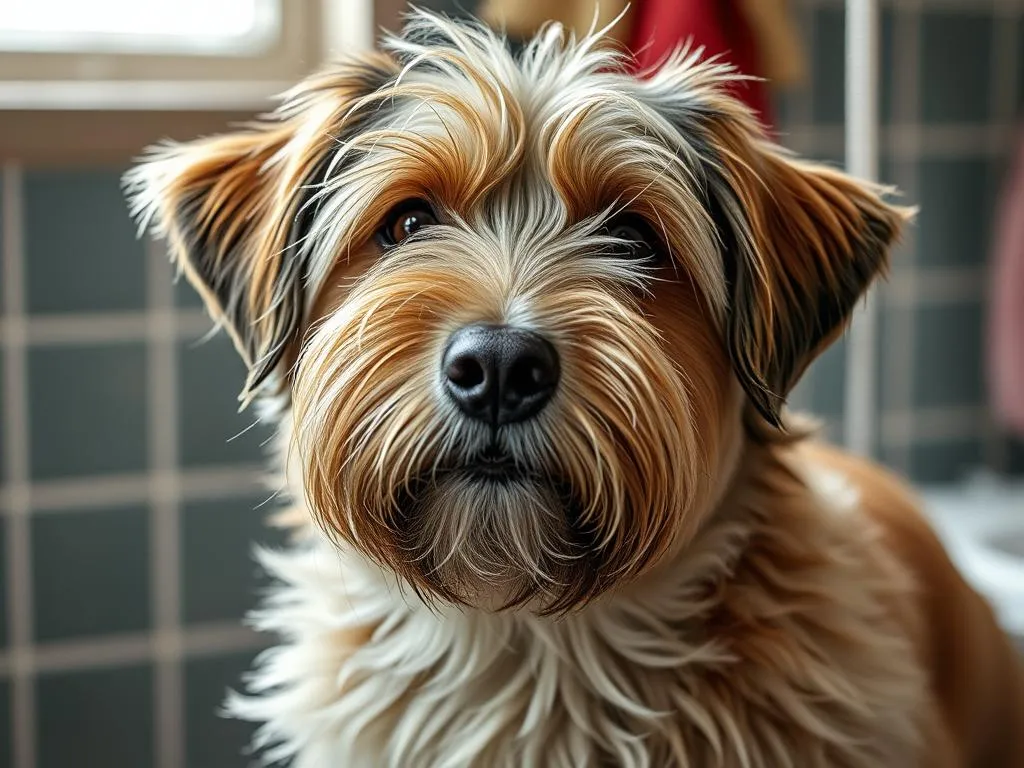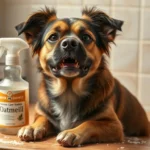
Introduction
Maintaining your dog’s health is integral to their overall well-being, and grooming plays a crucial role in this process. Regular grooming not only helps keep your dog looking clean and tidy but also promotes healthy skin and coat. When it comes to bathing, many dog owners might wonder, if I have no dog shampoo, what can I use? It’s essential to find safe and effective alternatives to commercial shampoos to ensure your furry friend remains healthy and comfortable.
Understanding Dog Skin and Coat Health
Anatomy of Dog Skin
A dog’s skin is its largest organ, serving several vital functions. The skin comprises multiple layers, including the epidermis, dermis, and subcutis, each playing a role in protecting the body, regulating temperature, and providing sensory information. The skin also contains hair follicles, sebaceous glands, and sweat glands, all contributing to the dog’s overall health.
Importance of Coat Health
A healthy coat is indicative of a well-nourished dog. It provides insulation and protection against environmental factors. Common coat and skin issues, such as dryness, irritation, and allergies, can lead to discomfort and even infections. Therefore, keeping your dog’s coat healthy through regular grooming and baths is paramount.
Risks of Using Human Shampoo
Many pet owners might consider using human shampoo in a pinch, but this can be harmful. Human shampoos often contain fragrances, sulfates, and other chemicals that can irritate a dog’s sensitive skin. Using these products can result in skin irritations, allergic reactions, and an imbalance in the natural oils that protect your dog’s skin.
Alternatives to Dog Shampoo
Natural Ingredients
Baking Soda
One effective alternative to dog shampoo is baking soda. Not only does it help neutralize odors, but it also acts as a gentle exfoliant. To use baking soda safely, mix about one cup of baking soda with a quart of water to create a paste. Apply this mixture to your dog’s damp fur, rub it in, and rinse thoroughly.
Oatmeal
Oatmeal is renowned for its soothing properties, making it an excellent option for dogs with sensitive skin. To create a homemade oatmeal wash, grind plain, uncooked oats in a blender until they form a fine powder. Mix one cup of the oatmeal powder with warm water and apply it to your dog’s coat. Leave it on for about 10 minutes before rinsing thoroughly.
Vinegar
Apple cider vinegar is another natural alternative that can help with skin issues. It has antibacterial and antifungal properties, making it beneficial for maintaining a healthy coat. To use vinegar, dilute one part apple cider vinegar with one part water. Apply the solution to your dog’s coat after bathing, allowing it to sit for a few minutes before rinsing.
Commercial Alternatives
Baby Shampoo
In emergencies, some baby shampoos can be a safe alternative due to their milder formulations. These shampoos are typically free from harsh chemicals and fragrances. However, it’s crucial to choose a product labeled “tear-free” and to use it sparingly, as frequent use can still lead to skin problems.
Castile Soap
Castile soap is a vegetable-based soap that is gentle enough for dogs. It is biodegradable and free of synthetic ingredients. To use Castile soap for dog bathing, dilute one part soap with ten parts water. Apply this mixture to your dog’s coat, lather, and rinse well.
Specialized Grooming Products
For dog owners looking for convenience, there are various dog-safe wipes and sprays available in pet stores. These products can help in between baths and are formulated specifically for canine skin. Additionally, dry shampoos designed for dogs can be an excellent option for quick clean-ups without the need for water.
Best Practices for Dog Bathing
Frequency of Bathing
Determining how often to bathe your dog depends on several factors, including breed, coat type, and lifestyle. Generally, dogs with longer or thicker coats may require more frequent baths, while those with short hair may only need a bath every couple of months. Regular grooming, such as brushing, can help reduce the need for frequent bathing.
Preparing for Bath Time
Making bath time enjoyable for your dog is essential. Gather all necessary supplies, such as a non-slip mat, towels, and a handheld showerhead or bucket for rinsing. It’s helpful to brush your dog before bathing to remove loose fur and tangles. Using treats during the process can also create a positive association with bath time.
Bathing Techniques
When it comes time to bathe your dog, follow these steps for a smooth experience:
- Wet the Coat: Use lukewarm water to wet your dog’s coat thoroughly, avoiding the eyes and ears.
- Apply the Shampoo/Alternative: Use your chosen alternative, whether it’s a natural mixture or a commercial product, and lather it throughout the coat.
- Rinse Thoroughly: Rinse your dog completely to prevent any residue from remaining, as this can lead to skin irritations.
- Dry Your Dog: Use a towel to dry your dog, or consider using a pet dryer on a low setting for quicker drying.
Signs Your Dog May Need Professional Grooming
When to Seek Help
There are specific situations when professional grooming is necessary. If your dog has matted fur that you cannot detangle, or if they are showing signs of skin issues such as excessive scratching, redness, or sores, it’s time to consult a professional.
Finding a Professional Groomer
When selecting a groomer, consider their qualifications and experience. Look for reviews and ask for recommendations from fellow dog owners. It’s also beneficial to visit the grooming facility beforehand to ensure it’s clean and well-maintained. Prepare a list of questions to ask, such as their approach to handling anxious dogs and the products they use.
Maintaining Dog Health Beyond Bathing
Regular Check-Ups
Routine veterinary visits are essential for maintaining your dog’s health. These check-ups allow for early detection of any potential health issues and provide an opportunity for vaccinations and preventative care. During these visits, your vet can assess your dog’s skin and coat health, offering personalized advice.
Nutrition and Diet
A balanced diet significantly impacts your dog’s skin and coat health. Foods rich in omega-3 fatty acids, such as fish, flaxseed, and certain oils, can promote a shiny coat and reduce skin irritations. Consult your veterinarian for recommendations on the best diet for your dog’s specific needs.
Exercise and Mental Stimulation
Regular exercise not only keeps your dog physically fit but also contributes to their mental well-being. Engaging in activities like walking, playing fetch, or even participating in dog sports can help reduce stress and promote a healthier lifestyle.
Conclusion
Maintaining proper dog care is essential for ensuring your furry friend remains happy and healthy. By exploring safe alternatives to dog shampoo, you can effectively manage your dog’s grooming needs without compromising their skin health. Remember to choose natural options whenever possible, keep an eye on your dog’s skin and coat condition, and maintain a regular grooming routine to support their overall well-being.









